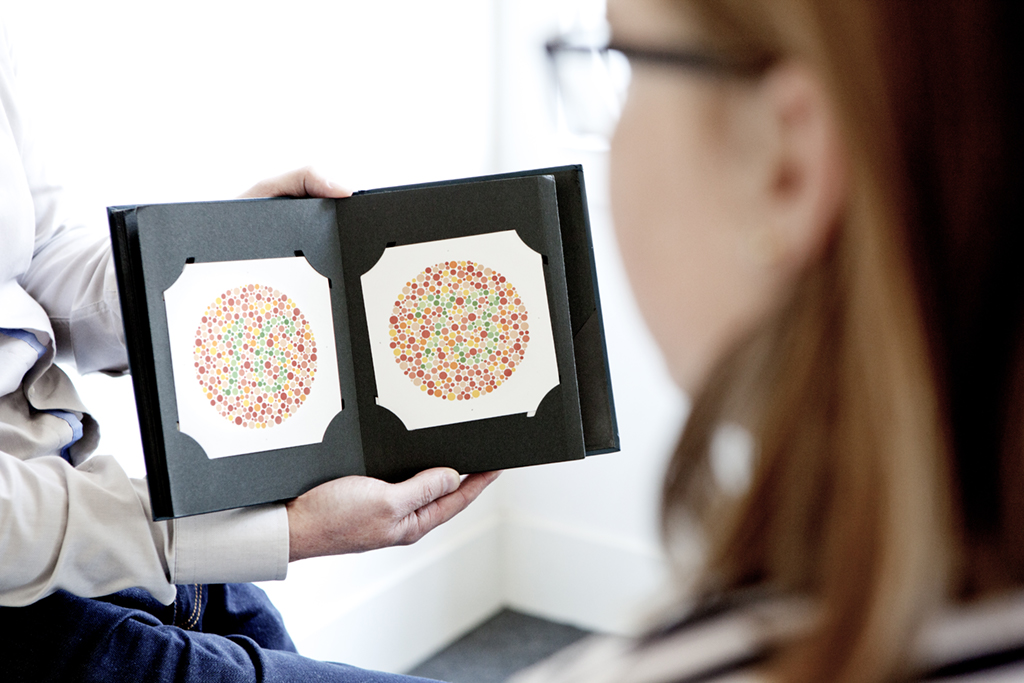This is a misnomer really, and would better be referred to as Faulty Colour Perception.
Who might have faulty colour perception?
It is usually an inherited condition that mostly affects men and boys. Around 8 males in 100 have some degree of faulty colour perception, compared with only 1 female in 200. Very rarely, colour perception can become faulty as a result of a medical condition.
There is no cure for faulty colour perception. Sometimes a red contact lens can be used in one eye. This doesn’t cure the problem: it “cheats” the colour vision tests because of the way they work.

How does it affect eyesight?
Most people with faulty colour perception are not colour blind. They are simply less sensitive to particular colours – often green, sometimes red – than those with normal vision. They still see grass as green! But they have difficulty distinguishing between different shades of green or red. They may also have difficulty if there is only a very small amount of colour, such as in a distant traffic light.
A few people are completely colour blind. They cannot see most colours and view the world in black, grey and white.
How do we test for faulty colour perception?
The most common test consists of circles made up of coloured dots. People with normal vision can correctly read a number among the dots. This is the “Ishihara” test, which is very good at picking up even tiny defects. We also use other tests, such as the City University Test (known as TCU) to distinguish moderate and severe defects, although slight defects can pass without any problem. The police often require applicants to the force to take the TCU test – usually the second edition.
